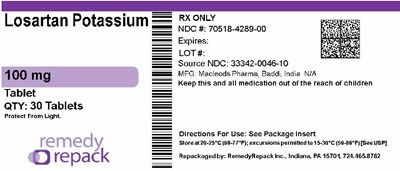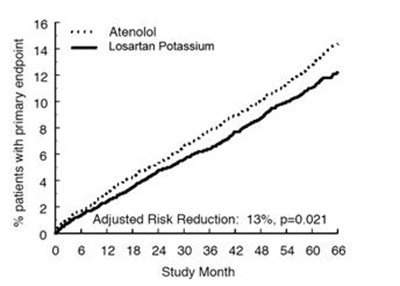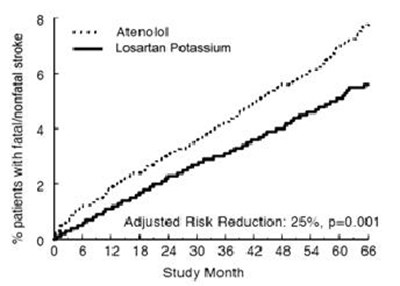Product Images Losartan Potassium
View Photos of Packaging, Labels & Appearance
Product Label Images
The following 6 images provide visual information about the product associated with Losartan Potassium NDC 70518-4289 by Remedyrepack Inc., such as packaging, labeling, and the appearance of the drug itself. This resource could be helpful for medical professionals, pharmacists, and patients seeking to verify medication information and ensure they have the correct product.
Remedy_Label - Remedy Label

This is a description for Losartan Potassium 100 mg tablet. The quantity is 30 tablets. It is a prescription medication with an NDC number provided. The medication is manufactured by Macleods Pharma in Baddi, India. The storage instructions recommend keeping it at 20-25°C, with excursions permitted to 15-30°C. The directions for use are available in the package insert. It has been repackaged by Remedy Repack Inc. in Indiana, PA.*
fig.3 - losartan figure no 3

This is a tabular presentation likely showing results from a study or clinical trial. It includes data on participants' demographics (age, gender, race), medical conditions (ISH - possibly hypertension, Diabetes, History of CVD), and treatment effectiveness (Primary Composite - possibly related to stroke) comparing Losartan and Atenolol. The table contains information such as the number of events, event rates, and hazard ratios with their confidence intervals. There seems to be a comparison between different categories within each variable (e.g., age groups, genders) and potentially the impact of treatments on outcomes.*
fig.1 - losartan figure1

This appears to be a data table showing the percentage of patients reaching the primary endpoint over time for two different treatments, Losartan Potassium and Atenolol. An adjusted risk reduction of 13% is mentioned. The table spans study months from 12 to 68.*
fig.2 - losartan figure2

This text provides information on a comparison between Atenolol and Losartan Potassium in terms of adjusted risk reduction for fatal or non-fatal strokes. The study shows a 26% risk reduction with a p-value of 0.001 over a period of 60 study months.*
* The product label images have been analyzed using a combination of traditional computing and machine learning techniques. It should be noted that the descriptions provided may not be entirely accurate as they are experimental in nature. Use the information in this page at your own discretion and risk.

